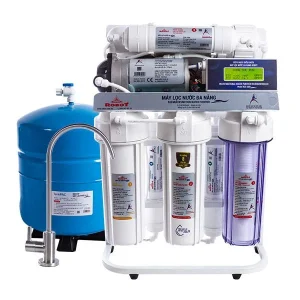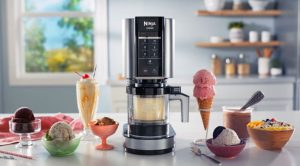Range Hood: What Is It? How It Works, Applications, and Safe Usage Tips

A range hood, also known as an exhaust hood or kitchen hood, is an essential appliance in most kitchens designed to improve air quality by removing smoke, steam, odors, and grease that are produced during cooking. In this article, we’ll explore what a range hood is, how it works, its common applications, and tips on using it safely to ensure maximum efficiency.
1. What Is a Range Hood?
A range hood is a kitchen ventilation device that is installed above the stove or cooktop. Its primary function is to remove airborne grease, smoke, steam, odors, and heat that are created during cooking. By improving ventilation, it helps maintain air quality and prevents buildup of grease that could lead to fire hazards.
Types of Range Hoods:
- Under-Cabinet Range Hood: This type is installed under a kitchen cabinet, directly above the stove. It’s one of the most common and cost-effective options for homeowners.
- Wall-Mounted Range Hood: This hood is mounted on the wall above the stove and extends downward. It is more prominent and stylish, often used in open kitchen designs.
- Island Range Hood: Ideal for kitchens with a stove or cooktop located on an island, this type is suspended from the ceiling and can provide powerful ventilation.
- Downdraft Range Hood: Installed in the countertop, downdraft hoods draw smoke and odors downward and vent them out of the kitchen. They are particularly useful in kitchens with limited space or an island cooktop.
- Convertible Range Hood: A flexible option that can operate as either ducted (venting air outside) or ductless (recirculating filtered air).
Benefits of Using a Range Hood:
- Improved Air Quality: It helps remove harmful cooking fumes, smoke, and odors, making your kitchen more pleasant to cook and spend time in.
- Grease Control: By capturing grease particles, a range hood helps prevent grease buildup in your kitchen, reducing the risk of fire.
- Preventing Moisture Damage: The range hood helps expel steam and moisture that could damage your kitchen cabinets, walls, or countertops.
- Energy Efficiency: Some modern range hoods are designed to be energy-efficient, helping maintain a comfortable kitchen environment without wasting energy.
2. How Does a Range Hood Work?
A range hood works by pulling in air from the kitchen, filtering it, and then either venting it outside or recirculating it. The process involves several key components that work together to improve your kitchen’s ventilation.
Key Components of a Range Hood:
- Fan/Blower: The fan is the most critical part of a range hood, responsible for pulling air through the vents. It creates suction to draw in air, smoke, and steam from the cooking area.
- Filters: Range hoods are equipped with various filters to capture grease, smoke, and odors. Common types include aluminum mesh filters, charcoal filters, and baffle filters. Filters need to be cleaned or replaced regularly for optimal performance.
- Ventilation Duct (for ducted models): The air pulled by the fan is sent through a duct, which vents it outside the home. Ducted systems are more effective at removing cooking fumes but require proper installation.
- Lighting: Most range hoods are equipped with built-in lights that illuminate the cooking surface below, making it easier to see when preparing food.
- Control Panel: A range hood’s control panel allows users to adjust fan speeds, turn on/off lights, and sometimes select different settings for various cooking needs.
How the Process Works:
- Air Intake: The fan draws in air, smoke, steam, and grease from the cooking area.
- Filtration: The air passes through the filters, which capture grease particles and some odors.
- Air Removal: Depending on the type of range hood, the air is either vented outside through a duct or recirculated back into the kitchen after being filtered.
3. Where Is a Range Hood Used?
Range hoods are primarily used in kitchens, but they serve various purposes depending on the type and setup. Below are the common scenarios where range hoods are beneficial:
Home Kitchens:
- Everyday Cooking: In most home kitchens, a range hood is installed above the stove to improve air quality, remove steam, and prevent lingering odors from cooking.
- Grease and Smoke Management: Range hoods are particularly important for grilling, frying, or sautéing, where excess grease or smoke can be a concern.
- Open Concept Kitchens: In homes with open-concept kitchens, where the kitchen is integrated with the living or dining areas, a range hood helps keep the air clean and fresh for the entire space.
Commercial Kitchens:
- Restaurants and Cafes: In commercial kitchens, range hoods are a must for removing large amounts of steam, grease, and odors. They help keep the kitchen environment clean and safe while adhering to health and safety regulations.
- Catering Services: Mobile or portable range hoods are also used in catering kitchens to ensure proper ventilation, especially in temporary setups.
Specialized Use:
- Laboratories or Industrial Kitchens: Range hoods are used in settings where ventilation is crucial, such as laboratories that use chemical processes or in industrial kitchens where high heat and smoke are generated.
4. How to Use a Range Hood Safely
To get the best performance from your range hood and ensure safety in the kitchen, follow these essential safety tips:
Before Use:
- Check the Installation: Ensure the range hood is properly installed and the vent is functioning correctly. This is especially important for ducted models, where the duct must lead to an external vent.
- Clean the Filters: Regularly check and clean the filters to prevent grease buildup, which could become a fire hazard.
- Turn On Before Cooking: It’s essential to turn on the range hood before cooking to allow it to start ventilating the air immediately.
During Use:
- Avoid Overloading: Ensure the fan is on the correct setting for the intensity of your cooking. Overloading the system can reduce efficiency.
- Use the Fan Correctly: Set the fan to a high speed if you’re cooking food that generates a lot of smoke or grease, and adjust it as necessary for less intense cooking.
- Cook in a Well-Ventilated Area: Although range hoods are effective, having good general ventilation in the kitchen, such as open windows or fans, can improve airflow.
After Use:
- Turn Off the Hood: After cooking, turn off the range hood to avoid unnecessary power usage.
- Clean the Hood and Filters Regularly: Regular maintenance is key to ensuring that your range hood works efficiently. Clean filters every 1-2 months, or more often if you cook frequently, and clean the hood’s exterior to remove grease.
- Inspect for Damage: Periodically check the range hood and its components for wear or damage, such as a malfunctioning fan or clogged ducts.
Conclusion
A range hood is a crucial kitchen appliance that improves air quality, enhances safety, and ensures a more comfortable cooking experience. Whether you’re frying, grilling, or simply boiling water, a range hood helps manage smoke, steam, and odors while maintaining a cleaner and safer kitchen environment. By understanding how it works, recognizing its applications, and following safety tips, you can maximize the efficiency of your range hood and enjoy a healthier, more pleasant cooking experience.







